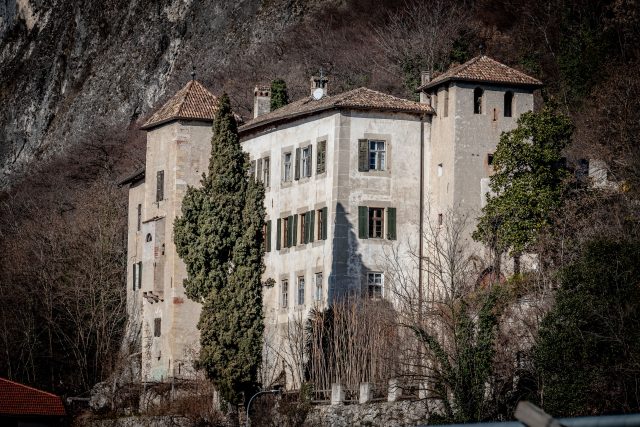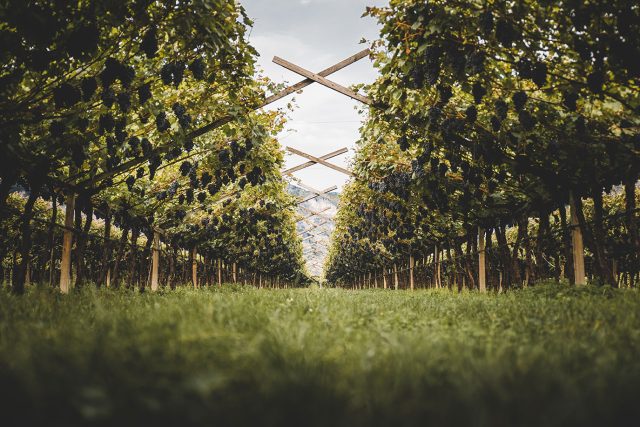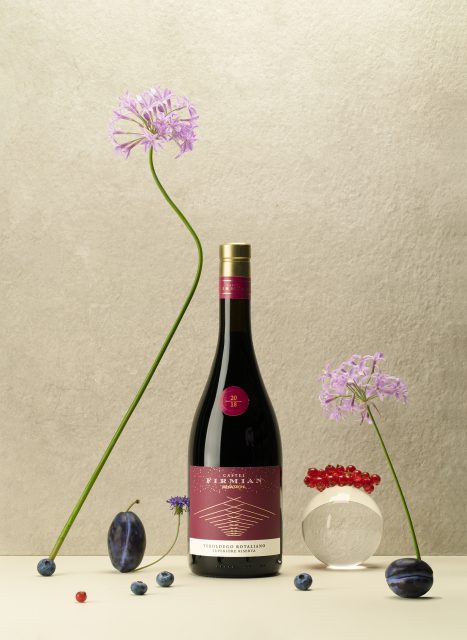This website uses cookies so that we can provide you with the best user experience possible. Cookie information is stored in your browser and performs functions such as recognising you when you return to our website and helping our team to understand which sections of the website you find most interesting and useful.
How the 600-year-old Castel Firmian inspires Mezzacorona’s wines
The Trentino region’s rich history still inspires winemaking, as seen in Mezzacorona’s Castel Firmian range.

Few images evoke the history of Italy’s Trentino better than Castel Firmian. The 15th Century palazzo overlooks the Piana Rotaliana, a valley floor between Trento and Bolzano that has long been carpeted in vineyards. Behind it sits an even older castle: the medieval Castel san Gottardo, nestled in a grotto in a hulking limestone mountain, dates to at least the 12th Century. Go further back still, and the town of Mezzocorona shows evidence of Roman farming.
Producer Mezzacorona knew that the historic building was the ideal identity for its Castel Firmian range. The line of wines, sourced from the vineyards it overlooks, could not exist without paying tribute to the region’s rich heritage.
The very same factors that shaped the area’s historic development are key to its winemaking industry. The dramatic geography – glacial valleys between rocky mountains – drove early settling. Around 2,000 years ago, the valleys formed part of the Via Claudia Augusta, the monumental Roman road that connected the Adriatic to Bavaria.
Nowadays, the same geography is ideal for the 14 varieties in the Castel Firmian range. Producing such diversity and volume is made possible by the striking terrain. The valley floor provides ample space for extensive vineyards, bathed in sunlight but cooled by alpine breezes. Yet variations in altitude, aspect, shelter and continentality mean that Trentino has a huge number of terroirs. The variety ensures Mezzacorona can grow everything from delicate Pinot Grigio to rich deep Cabernet Sauvignon, all without ever leaving the region.

However, more than a shared geography binds Mezzacorona’s Castel Firmian range to the region’s past. The producer has a more than a century of history. As an association of growers, it formed in 1904, but those first growers already had generations of prior expertise. In several regards. Mezzacorona is still an active custodian of that local know-how.
That begins in the vineyard. The vines for Castel Firmian use the traditional pergola trellis, in which the canopy is trained horizontally with grapes hanging below. The ancient system, maligned through much of the 20th Century, is now enjoying renewed interest. On sites with high sunlight interception, the shade prevents sunburn while the grapes are kept cool by added height. The ventilation is also a bonus, preventing the damp, fungus-friendly conditions that can result from mountain rainfall. As climate change brings more extreme weather events, the system is proving more useful than ever.
A further connection comes from a local variety. Terodego Rotaliano, a local black grape, is older than the castle itself, already mentioned in local sales contracts by the time the palazzo was built. Despite the marketability of French varieties, the Mezzacorona has continued to produce the native style, known for its wild berry fruit and dense but supple tannins.

Likewise, the flagship Pinot Grigio expressions show a respect for Trentino history. Though not a native variety, it makes more Italian still white wines than any other variety and has become a standard-bearer for the country’s northeastern regions. The Castel Firmian wines nod to its Itailan heritage.
In part, it is a stylistic choice. Alongside a fresh, youthful Pinot Grigio, Mezzacorona makes a Pinot Grigio Riserva. Though the first, in a fresh expression that blends fruity and floral notes, is the more contemporary version, the Riserva has an old-fashioned edge. Its blend is split between stainless steel and small oak barrels, adding aromas of vanilla and smoke. Although less suited to the mass market, it is a traditional treatment the producer believes is worth preserving.
Though a modern company, exporting to around 70 countries, the importance of local heritage has not been lost at Mezzacorona. If you look across the valley from the Castel Firmian (still standing, though now housing municipal offices), you will see Mezzacorona’s vineyards. You will see local grapes, grown using traditional techniques and built on generations of expertise. Some things change very little over 600 years.


